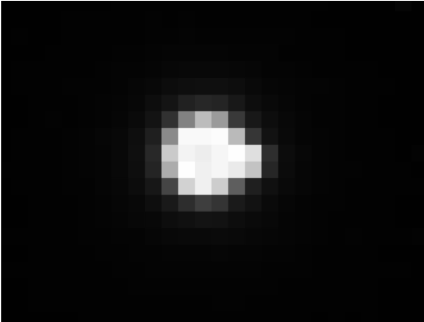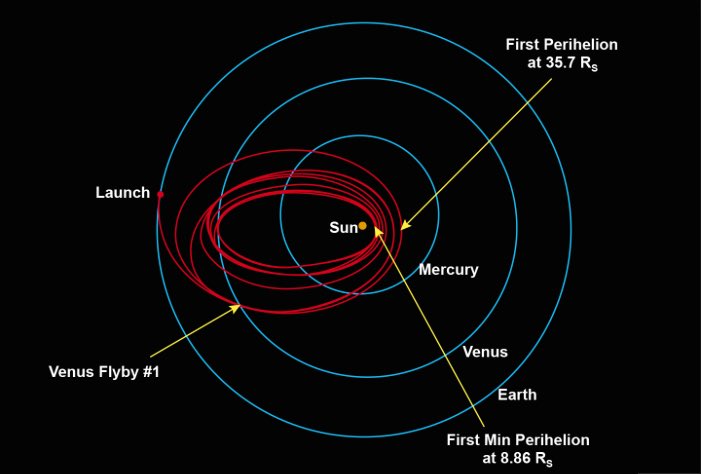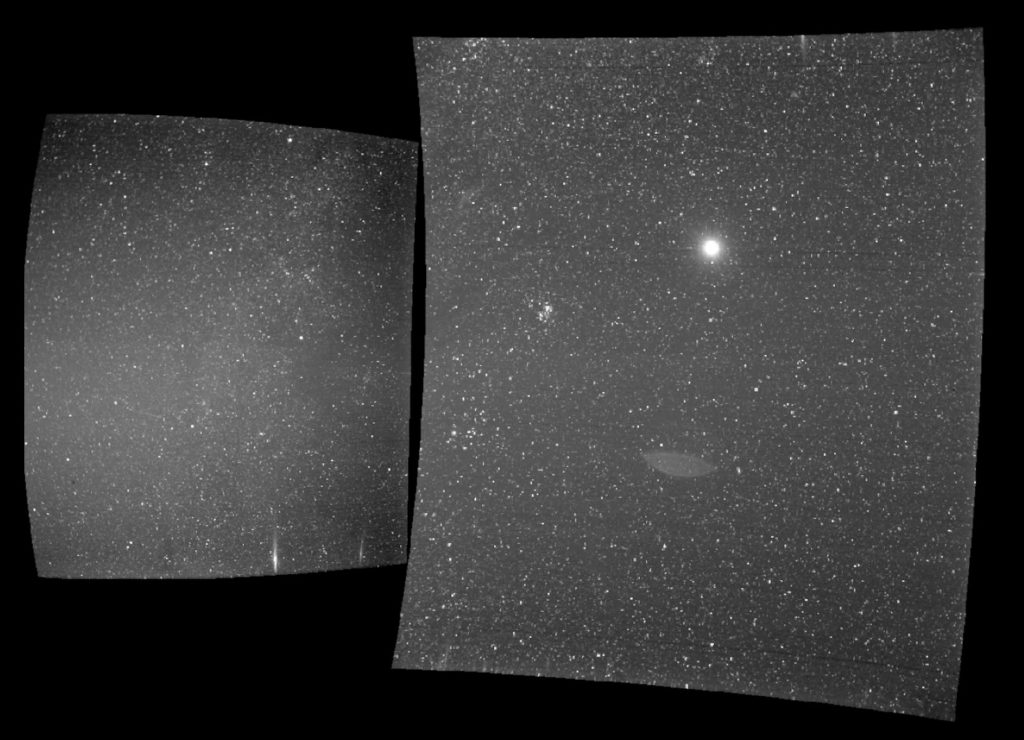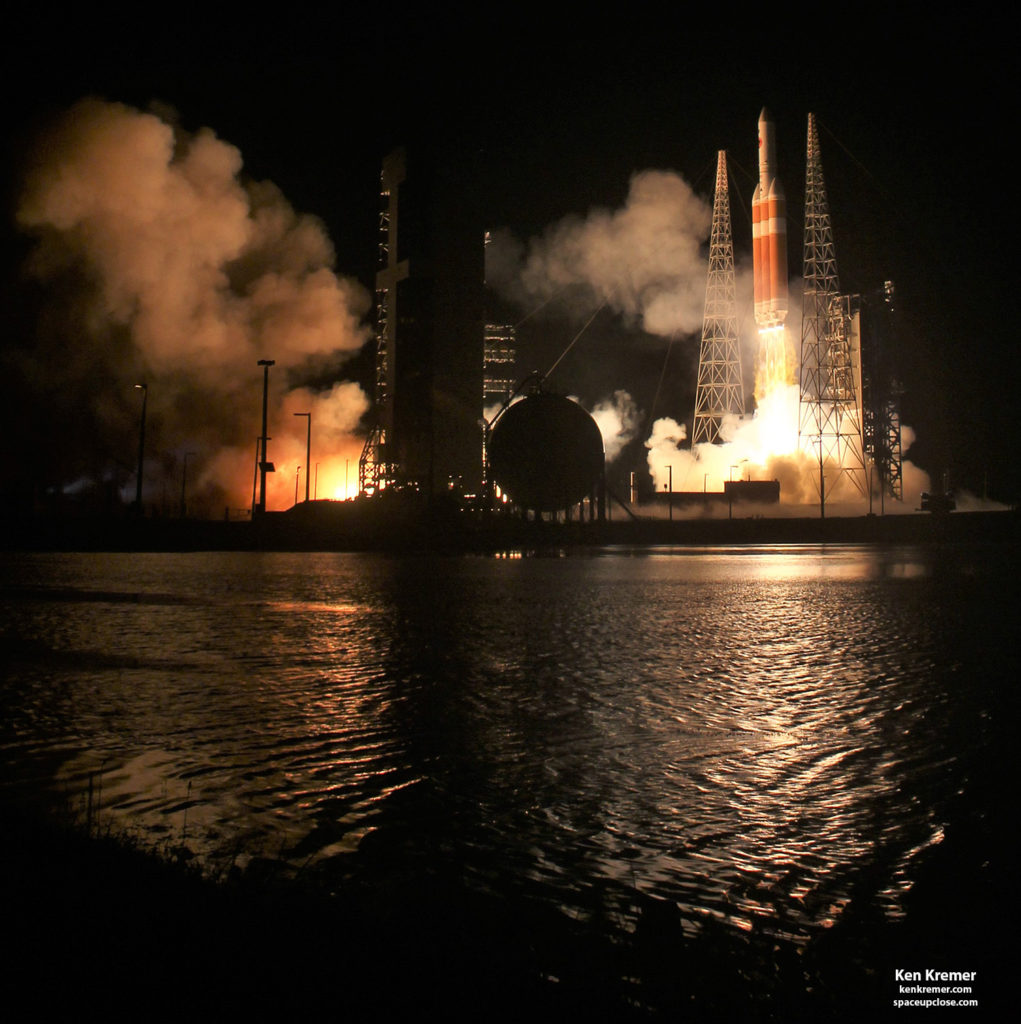KENNEDY SPACE CENTER, FL –
NASA’s recently launched Parker Solar Probe has snapped a glorious view looking
back home to all of humanity as it continues diving towards its first close encounter with the
Sun.
The magnificent view of the ‘Earth from Space’ – seen above – was
snapped from a distance of 27 million miles (43 million km) from her Home Planet as the
spacecraft was speeding to its first flyby of the Planet Venus setting up the
trajectory for the 1st close flyby of the Sun.
“On Sept. 25, 2018, Parker Solar Probe captured
a view of Earth as it sped toward the first Venus gravity assist of the mission,”
NASA announced in a statement.
“Earth is the bright, round object visible in
the right side of the image.”
“Parker captured this image while speeding
toward the 1st Venus gravity assist of our Mission to “touch” the
Sun.”
The car sized Parker successfully barreled past Venus at
about 4:45 a.m. EDT, Oct. 3 – barely 1500 miles (2400 km) above the surface.
The newly released image was captured by Parker’s only imaging
instrument known as WISPR, or Wide-field Imager for Solar Probe.
“During science phases, WISPR sees structures
within the Sun’s atmosphere, the corona, before they pass over the spacecraft.”
The newly released Parker image is shown in 2
panels which come from the WISPR instruments two telescopes, which point in
slightly different directions and have different fields of view.
The left-hand image was captured by inner
telescope, while the right-hand image showing Earth was captured by the outer
telescope.
The team also released an enlarged zoomed in
image of Earth.
 |
|
A close-up of Earth from
WISPR’s Sept. 25, 2018, image shows what appears to be a bulge on our planet’s right side — this is the Moon. Credits: NASA/Naval Research Laboratory/Parker Solar Probe |
on the right side.
That bulge is the Moon – “just peeking out from
behind Earth.”
Below Earth is a hemispherical shaped feature that’s
a result of lens flare produced as a result of very bright Earthshine.
Other well known
celestial objects are also visible in the image — like Pleiades to the low-left
of Earth in the right-hand image and the two bright objects, Betelgeuse and
Bellatrix, near the bottom of the left-hand image. They appear elongated
because of reflections on the edge of the detector, says NASA.
The 1st solar encounter period
begins on Oct. 31 and lasts through Nov. 11.
Closest approach to the Sun will occur on Nov.
5.
The mission will conduct 7 Venus flyby’s to
set up 24 perihelion close encounters with the sun through 2024. The Venus
flyby’s will precisely
set its trajectory toward the Sun and slow the probe down instead of speeding
it up.
The $1 Billion mission began with a dazzling
middle-of-the-night blastoff of the mighty Delta IV Heavy rocket in the wee
hours of Sunday morning, Aug. 12 – and delivered the car sized spacecraft to
its intended trajectory towards Venus and the Sun.
The 23-story tall triple barreled United
Launch Alliance Delta IV Heavy rocket successfully launched at 3:31 a.m. EDT
Aug. 12 from the Florida Space Coast and put on a brilliant display of fire
power with 2.1 million pounds of thrust spewing forth from the trio of liquid
oxygen/liquid hydrogen RS-68A main engines that quickly turned night into day a
few hours before Sundays natural sunrise under nearly cloud-free skies.
Check out our prior Space UpClose gallery of photos
and videos. Plus my BBC TV World News prelaunch interview.
Here’s my Parker launch video
from a remote camera set at pad 37:
Video Caption: Launch of NASA’s Parker Solar Probe on United Launch Alliance
Delta IV Heavy rocket on Aug. 12, 2018, at 3:31 a.m. EDT from Launch
Complex 37 at Cape Canaveral Air Force Station, Florida on humanity’s 1st
mission to our sun that will fly through the sun’s atmosphere or corona – as seen in this remote camera video taken at the pad. Credit:
Ken Kremer/kenkremer.com/spaceupclose.com
Here’s my BBC TV World News
Pre-Launch interview:
Watch for Ken’s continuing onsite coverage of NASA, SpaceX, ULA,
Boeing, Lockheed Martin, Orbital ATK and more space and mission reports direct
from the Kennedy Space Center, Cape Canaveral Air Force Station, Florida and
Wallops Flight Facility, Virginia.
Stay tuned here for Ken’s continuing Earth and Planetary science and human
spaceflight news: www.kenkremer.com
–www.spaceupclose.com – twitter @ken_kremer – email: ken at kenkremer.com
Dr. Kremer is a research scientist and journalist based in the
KSC area.
………….
Ken’s photos are for sale and he is available for lectures and outreach events
 |
| The orbit design for the Parker Solar Probe mission illustrating the trajectory through the inner solar system following Aug. 12, 2018 launch from Cape Canaveral, FL. Credit: NASA/Johns Hopkins APL |



